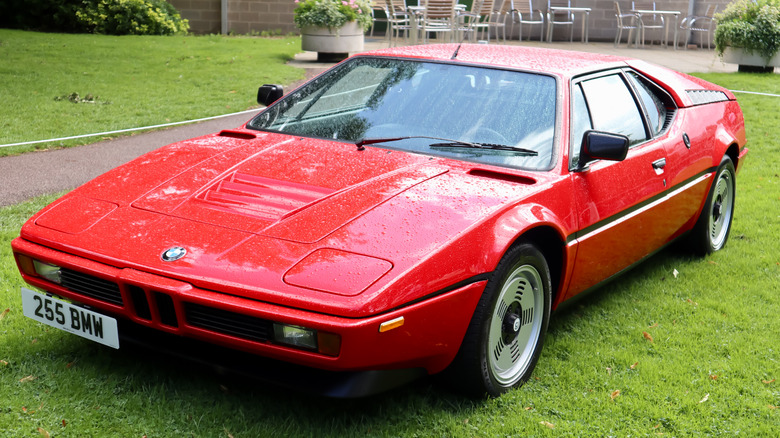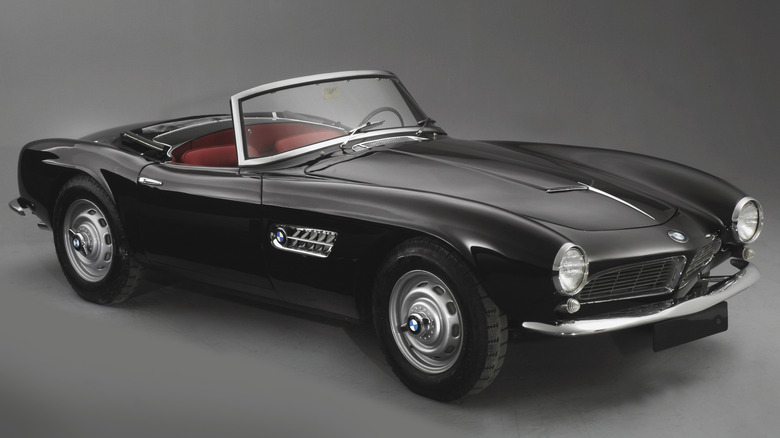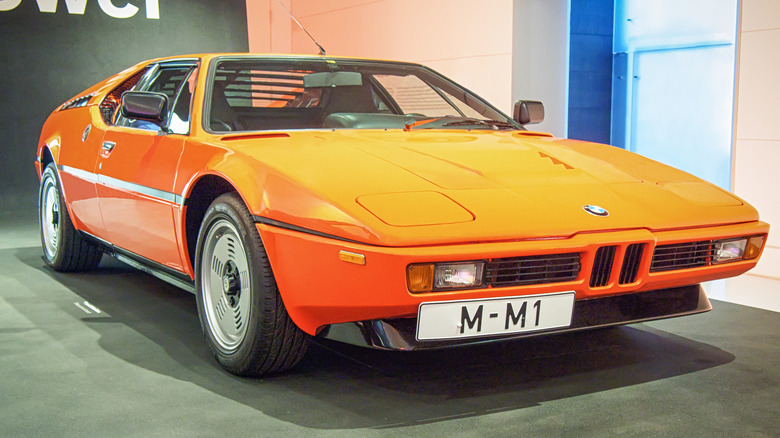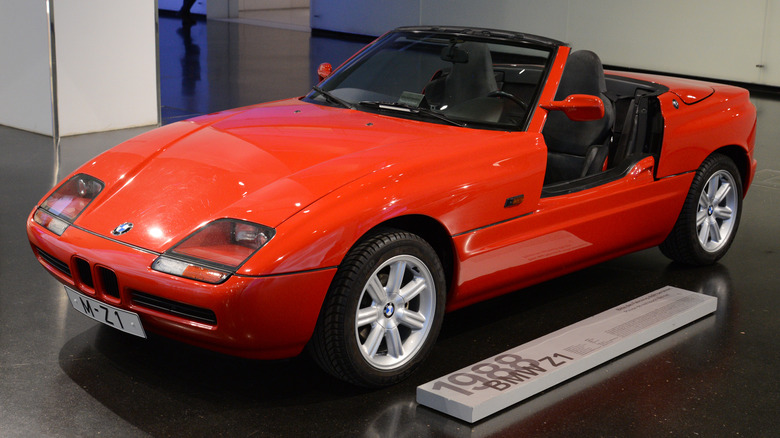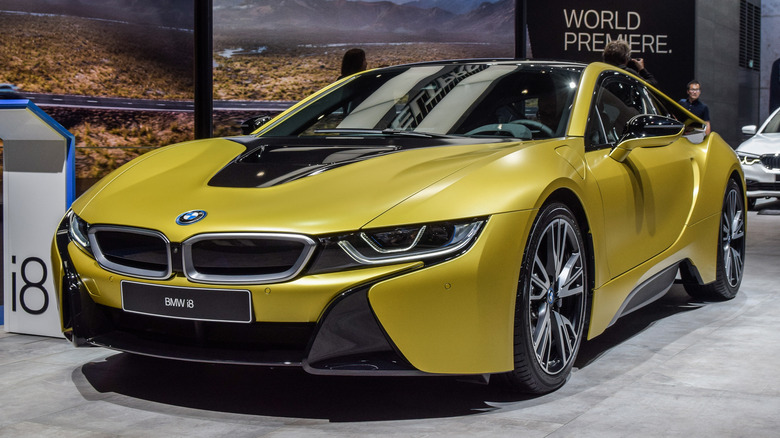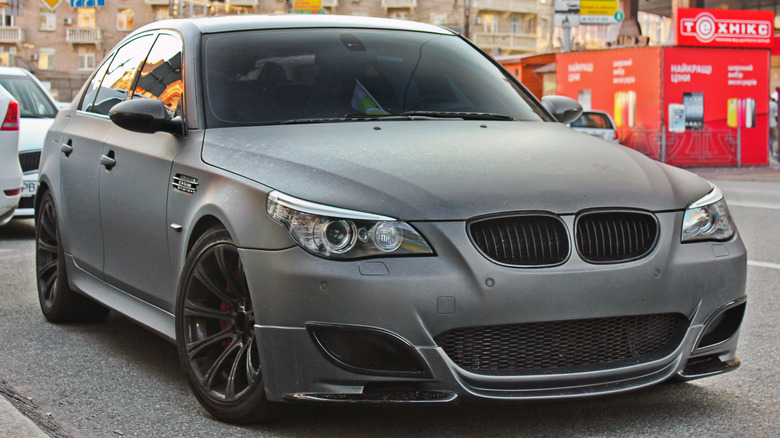BMW's 5 Biggest Car Flops Of All Time
Automakers invest vast amounts of time and money into developing new models, and BMW is no exception. While research can offer clues as to how successful a particular vehicle will be, nobody can predict the future. The inability to foresee what will come applies not just when the car goes on sale, but throughout development as hiccups can cause unexpected outcomes. Cost overruns and supply issues can result in retail prices of special projects being higher than expected. No matter what issues may arise, the end result can also be a total failure.
A flop can mean many things to many people. It is fairly subjective work to illustrate BMW models that don't reach the bar, and for a company with a long history and an impressive list of desirable automobiles, a flop is not easy to come by. Furthermore, some models that can be perceived as flops are still pretty good cars. In the case of BMW, any one of the cars designated a flop is still something worth driving, if not still a highly desirable vehicle to own. Nonetheless, here are five BMW vehicles that, in one way or another, are a flop.
BMW 507
In terms of design, the 507 is anything but a failure. In post-war Germany, the economic conditions took years to improve up to a point where the local population could afford luxury goods like a BMW automobile. Germans had a long-established auto manufacturing base and years of experience building high-quality, fast, and luxurious vehicles, but focused on affordable transportation after the war.
Max Hoffman, importer of German cars to America after the war, introduced the American public to post-war European vehicles, including Jaguar, Volkswagen, Mercedes-Benz, and Porsche (via Motor Trend). Having been successful in convincing Mercedes to build and sell the iconic 300SL gullwing, Hoffman convinced BMW to create a sports car for American roads.
What came from those efforts was a strikingly beautiful car equipped with the first BMW V8 engine paired to a lightweight chassis and sporty suspension. The car was all aluminum and handmade. By all accounts, it was a great car that was attractive and even performed well in racing. It struck a chord with none other than Elvis Presley, who bought two of them during his Army service in Europe and sent them back home. However, the handmade nature and exclusive engineering made for a very expensive car with a retail price roughly double the intended target price of $5,000, Motor Trend notes. This meant that it only found buyers among the wealthy elite. For that reason, it was not a success and production ended after less than 250 copies were made.
BMW M1
The early '70s saw the creation of BMW Motorsports, intending to showcase engineering prowess through performance-oriented vehicles. Its first complete clean sheet vehicle was the M1, a mid-engined, track-focused car developed expressly to compete in FIA Group 4 sports car racing (via Car and Driver).
The wedge-shaped design of the M1 traces its roots to the 1972 BMW Turbo concept car. It sits on a tubular space frame and the sheet metal is all aluminum. Initially, Lamborghini was contracted to design and build the cars, but the late 1970s were not kind to the Bolognese company, and production shifted elsewhere. Hagerty explains that BMW found different companies to produce the bodies, the frames, and to put them together, only to have a final assembly and inspection completed by the Motorsport division. If this weren't enough headache, the FIA rules for Group 4 racing changed, making the car ineligible. To make use of the M1, BMW created a new racing series racing only M1 cars called BMW M1 Procar Championship. While it was a great test of skill for drivers, it only lasted a couple of years until Group 4 rules changed again, allowing the M1 to race.
The M1 is a beautiful and comfortable machine that performed well. However, due to the nature of its production and the need to have various companies involved, it was too expensive and few were sold. It was the first and last mid-engine supercar to ever come from BMW.
BMW Z1
BMW is known for solid, well-built luxury vehicles. Quirky and unusual, BMW is generally not. Spending decades building a reputation for producing and selling a certain kind of car brings a cache to a brand and really establishes a reputation. Somehow, the engineers and designers managed to slip the Z1 past executives.
The Z1 is an odd creation for BMW, notable especially for its doors. The 1988-91 BMW Z1 doors retract down into the doorsill in a vertical motion, leaving an opening in the side of the car for egress and a driving experience similar to a Fiat Jolly or Manx Buggy. The car is made of a unique monocoque chassis with a plastic floor bonded to the galvanized steel skeleton instead of typical unibody construction. The body panels are injection molded thermoplastics that BMW claims can be removed and replaced to change the color of the car within an hour.
The problems with the car are not the portions that are unique and quirky, however. The architecture and drivetrain are borrowed from its contemporary 3 series, with a 2.5L straight-six engine producing only 170 horsepower. According to Auto Trader, "despite its appearance, its BMW heritage, its rear-wheel drive, and its stick shift — it's not really all that sporty." The final blow for the Z1 was the retail price, which ended up around $45,000, about the same as a much faster and sporty Porsche 944 S2 Coupe. In the end, BMW sold only 8,000, mostly in Germany.
BMW i8
With the introduction of the BMW i8 in 2014, the manufacturer returned to the mid-engine sports car setup not seen since the M1. But while the M1 is a proper mid-engine supercar, the i8 is a technologically advanced hybrid featuring a not-supercar-like three-cylinder engine.
To be at the forefront of technology and design, BMW created an entire sub-brand dedicated to electrifying its cars. The i8 is the halo car for this endeavor. While the i8 boasts extraordinary tech, it is not without flaws. The styling is a futuristic combination of curves, sharp edges, bright colors, and flip-up butterfly doors like a proper supercar. The interior is a luxurious cockpit-like affair with LCD panels for the instrument cluster and an infotainment system with BMW iDrive. Because the gasoline engine is connected to the rear wheels and the electric motor is coupled to the front, the i8 is capable of FWD, RWD, and AWD, depending on driving mode and conditions, a versatile driving setup with impressive abilities to retain good traction. Much of the bodywork is carbon fiber, which reduces weight while retaining strength.
There are many things about the i8 to love and it should serve as a good base from which to develop the next generation of high-performing BMW. But the i8 has been retired with no replacement (via BMWBlog). While a fair number were sold, many buyers cannot bear shelling out at least $148,495 for a car with less than 400 horsepower and a 0-60 time slower than a Mustang GT. The i8 can travel only 15 miles on electricity alone. The electric mode is mostly useless, the power is subpar, and the styling is extreme — making this less than what a BMW should be.
BMW M5
The BMW E60 M5 is a great car and to call it a flop is controversial. Fast German sports sedans are the stuff of legend and among the most highly desired. The E60 M5, a high-performance version of the 5-series that sold from 2003-2010, packs a serious punch in traditional Bavarian style. The biggest upgrade from the 5-series is the naturally aspirated S85 V10 engine, an all-aluminum engine with four valves per cylinder, and BMW VANOS variable valve timing system. This V10 propelled the luxurious 5 series to 60 mph in just 4.4 seconds (via Motor Week). Transferring the power from the block to the wheels is a cutting-edge seven-speed sequential gearbox and M active locking differential.
Nobody should expect ownership of a high spec luxury sedan to be cheap. The BMW M5 V10 is no exception. Frequent oil changes alone can be costly. However, complaints of rod bearing failure abound on a number of BMW discussion boards. Some BMW diehards will say the issue is blown out of proportion, but a cursory search for M5 rod bearings will yield results of dozens of owners shelling out thousands to have their bearing replaced in engines with fewer than 100,000 miles. There is no question that the M5 is a fantastic sports sedan. Do the higher care costs of the vehicle make it a flop? Maybe, but the real takeaway could be that even when BMW misses the mark, it still shines.
